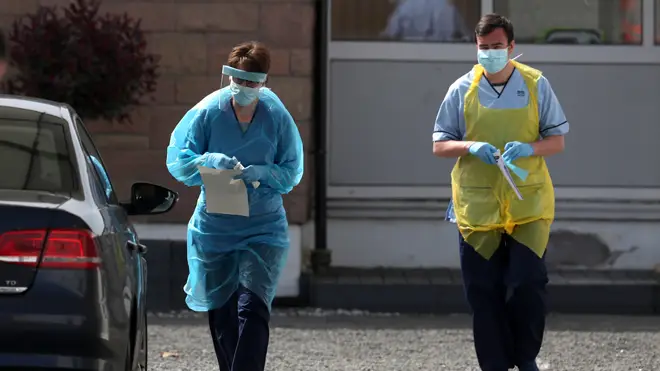
Shelagh Fogarty 1pm - 4pm
14 May 2020, 14:25

A scientist who sits on the Scottish Government’s Covid-19 advisory group has said “nothing is actively being done” to reduce the coronavirus ‘R number’ in Scotland’s communities at the moment, as the rate of infection has stabilised in the country.
Professor Mark Woolhouse, from the University of Edinburgh, explained at a briefing how social restrictions brought the R number down when they were first implemented in the country.
He added they will not actively reduce it any further in the community unless stricter measures are put in place.
The R number is an average that estimates how many people each coronavirus sufferer will infect.
Prof. Woolhouse said: “For R in the community you'd expect it to be stable, unless active measures were being taken to bring it down, such as additional social distancing measures (which is not current policy) or large-scale contact tracing (which is not yet being implemented).
“We are implementing measures to reduce spread in hospitals and care homes. That will bring down R in those settings and, even more importantly, will bring down the number of deaths because patients and care home residents are especially vulnerable.”
Scotland’s First Minister Nicola Sturgeon said she wants to see the R number as far below one as possible before she eases any lockdown restrictions in the country.
Ms Sturgeon said, “What we have done with lockdown has brought the R number down from where it was to where it is now… R is very important, but it can’t be seen in isolation. It is that relationship between the R number and the incidence of cases that’s important.
“If we get our incidence down, an R number being a bit closer to one is not as worrying as if your cases of incidence are still high. We have got to get that balance a bit better and that is why we need to stick with everything we’re doing just now.”
At the moment, experts estimate the rate of infection in Scotland is between 0.7 and 1.0, while south of the border Public Health England have estimated the R number in England to be 0.75.
Public Health England has also released estimations of the R number in regions across England with London at 0.4 and the North East and Yorkshire at 0.8.
Listen & subscribe: Global Player | Apple Podcasts | Google Podcasts | Spotify
In Scotland, the Conservative party is calling for the Government to also release a regional breakdown of the R number north of the border, but experts warn estimating the rate in small areas adds more uncertainty to the figure.
Scotland’s interim Chief Medical Officer, Dr Gregor Smith, said: “I get very uneasy when I hear R numbers being asserted with confidence. When we hear an R number we should treat it with caution because it is the range of R numbers we should be concentrating on.
“Particularly when it is in a small geographical area, the degree of confidence with which we can say that number is correct is really rather low.”
Nicola Sturgeon reiterated the ‘Stay at Home’ public health messaging is still the one she wants people in Scotland to see, despite restrictions being eased in England, because the incidence of positive cases is still too high, and the R number is still too close to one.